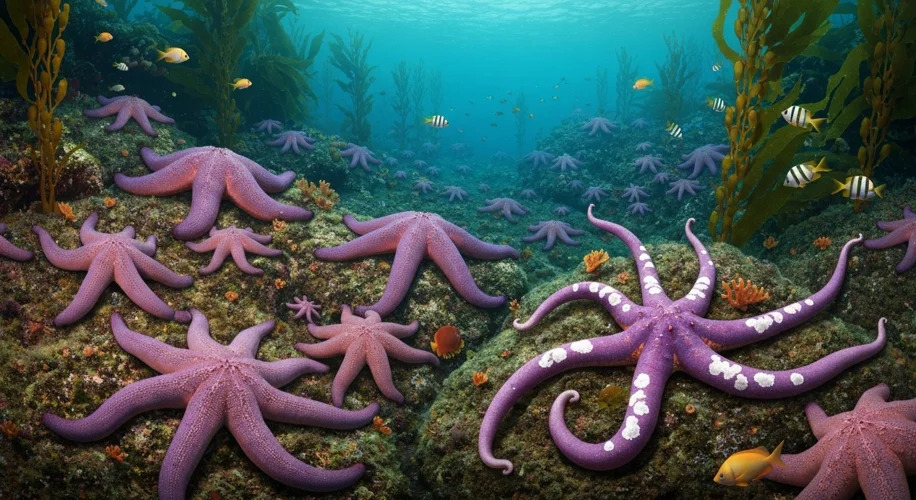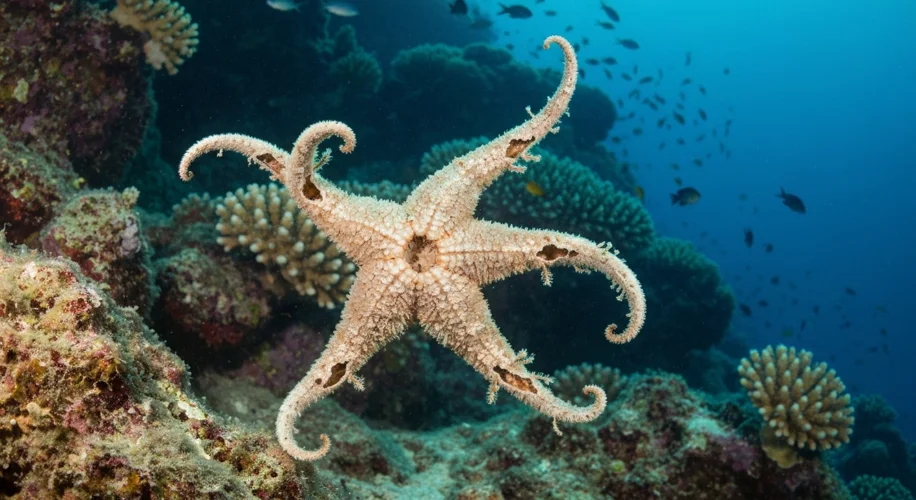Imagine a world teeming with vibrant life, where the ocean floor is a kaleidoscope of colors and textures. Dominating this underwater spectacle are the sea stars, those iconic five-armed (or more!) creatures, clinging to rocks, gracefully navigating kelp forests, and playing a crucial role in the marine ecosystem. For millennia, they have been a constant, a familiar sight along the Pacific coastlines.
But in 2013, an unseen enemy began to spread, a silent tide that would bring devastation to these ancient mariners. It started subtly – a hint of lethargy, a loss of grip, a peculiar melting away. Soon, the whispers turned into a chorus of alarm. Sea stars were dying, not in isolated incidents, but in horrifying numbers, across vast stretches of the Pacific Ocean, from the icy waters of Alaska down to the warmer climes of Baja California.
This was the dawn of the Sea Star Wasting Syndrome (SSWS). It was a chilling spectacle. Affected sea stars would lose their coordination, their tube feet would cease to function, and their bodies would begin to disintegrate, melting into a gooey mass. Some would develop lesions, others would contort unnaturally, their arms twisting. The speed of the disease was terrifying, with healthy individuals succumbing within days or weeks.

Scientists were baffled. What was this invisible killer? Early theories pointed to environmental factors – rising ocean temperatures due to climate change, pollution, or even shifts in ocean currents. The sheer scale of the die-off suggested a highly contagious agent, but pinpointing the culprit proved to be an immense challenge. Marine biologists and ecologists scrambled to collect samples, conduct experiments, and unravel the mystery. The affected species were diverse, ranging from the iconic sunflower sea star, with its many arms and vibrant colors, to the smaller, more common ochre sea stars.
The ecological implications were profound. Sea stars are often keystone species, meaning their presence has a disproportionately large effect on their environment. Ochre sea stars, for instance, are voracious predators of mussels. Without sea stars to control their populations, mussel beds began to expand, outcompeting other organisms and fundamentally altering the rocky intertidal zone, a critical habitat for countless species.
Finally, after years of dedicated research, the culprit was identified: a densovirus, a type of virus known to infect invertebrates. Specifically, a novel strain of densovirus was found to be highly prevalent in sick and dying sea stars. This virus attacks the sea star’s tissues, leading to the characteristic wasting symptoms. While the virus itself might have been present in the population for some time, a confluence of factors, potentially including environmental stressors, likely triggered the widespread outbreak and the alarming mortality rates observed since 2013.
The impact of the Sea Star Wasting Syndrome has been catastrophic. In some areas, populations of certain sea star species plummeted by over 90%. The sunflower sea star, once a common sight, was driven to the brink of extinction in many regions. This ecological upheaval serves as a stark reminder of the interconnectedness of marine life and the vulnerability of ecosystems to disease.
What does this mean for the future? The Pacific coastlines are still recovering, and the long-term consequences of this massive loss are still being studied. Researchers are monitoring populations closely, hoping for signs of recovery and resilience. The event has spurred a greater focus on marine disease ecology and the impact of environmental changes on ocean health. It’s a story that began with a mystery disease and ended with a profound lesson: the delicate balance of our oceans, so vital to the health of our planet, is a treasure we must strive to protect from unseen threats, whether they be viruses or the sweeping changes wrought by human activity.
The sea stars, once symbols of the ocean’s enduring beauty, now also stand as a poignant testament to its fragility. Their silent suffering echoes a vital message for us all.

